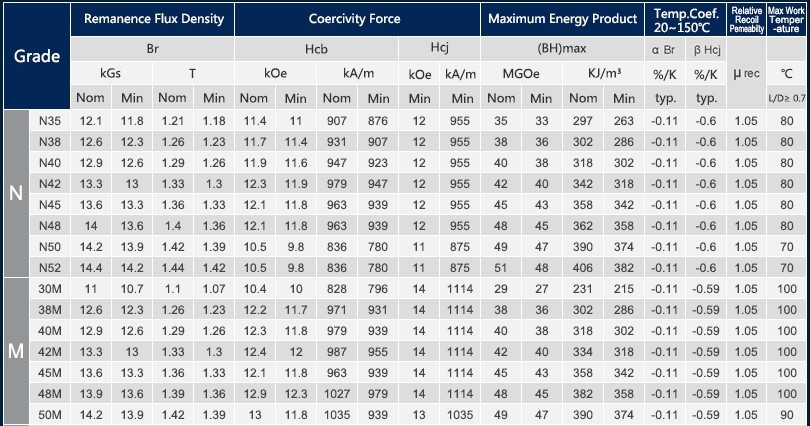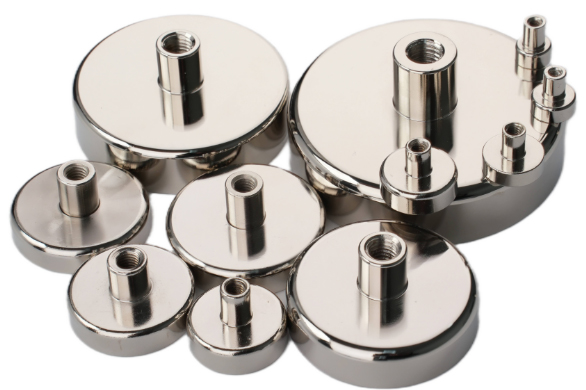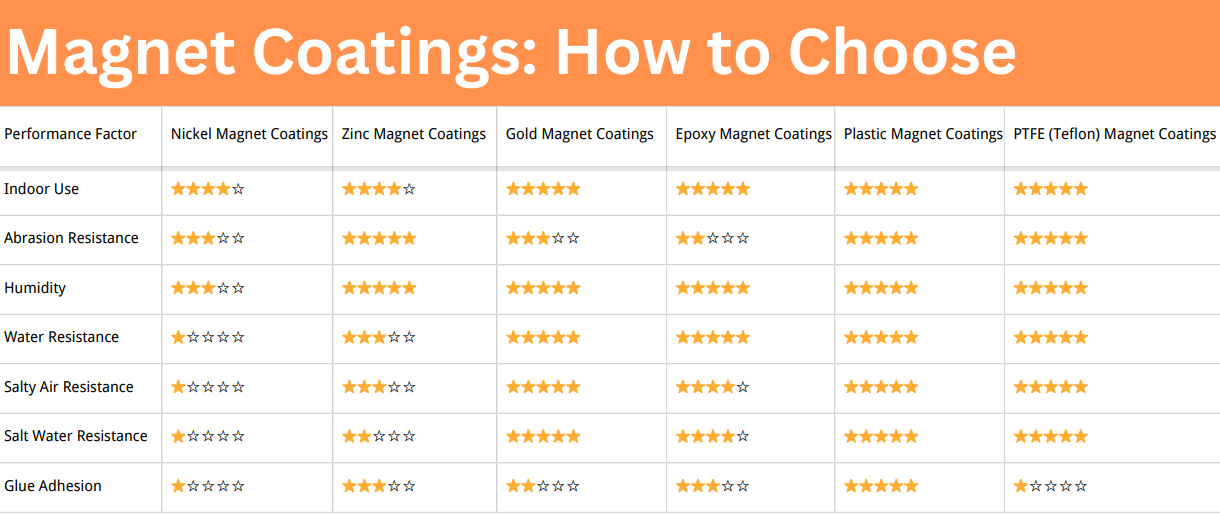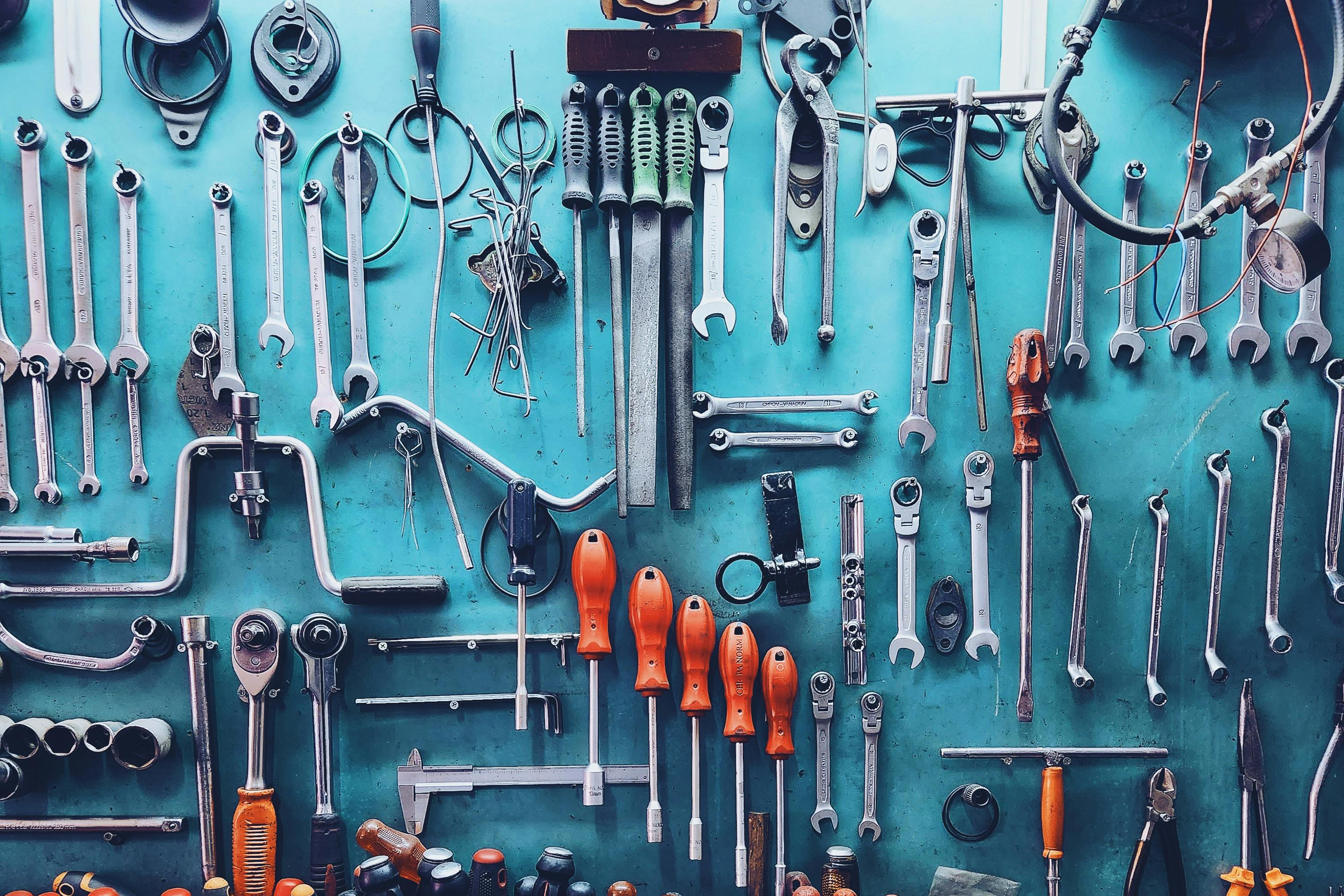N35 VS N52 Magnets
Neodymium magnet, also called NdFeB magnet, is a tetragonal crystal formed by neodymium, iron, and boron (Nd2Fe14B). This kind of magnet is the most commonly used rare earth magnet and is widely used in electronic products, such as hard drives, mobile phones, earphones, and battery-powered tools.
N35 and N52 magnets are two common grades of neodymium magnets. But many people don't know what is the difference between N35 and N52 magnets. So in this article, we try to make a comparison between them.

What is N35 Magnet?
N35 Magnet refers to the sintered neodymium iron boron magnet with the intrinsic coercivity of 33-36MGOE at KOE, the conversion of MGOe and kA/m3 is 1MGOe=8kA/m3, the maximum energy product of N35 neodymium iron boron material is 270kA/m3.
Further reading: Neodymium Magnet Grades
What is N52 Magnet?
The grade of N52 is much higher, and the maximum magnetic energy product is 48-51MGOE. The conversion of MGOe and kA/m3 is 1MGOe=8kA/m3, and the maximum magnetic energy product of N52 neodymium iron boron material is 400kA/m3.
Further Reading: N52 Grade Magnet – All You Need to Know

What are the Differences between N35 and N52 Magnets?
Under the premise of the same specification, the magnetic attraction of N52 is much larger than that of N35. NdFeB powerful magnets are generally divided into N35/N38/N40/N42/N45/N48/N50/N52 and other grades. The most obvious difference between each performance grade is the difference in magnetic properties.
For example, for products of the same specification, The higher the performance grade, the better the magnetic performance of the product. However, the neodymium iron boron strong magnet is a kind of surface molecule and its active product. Therefore, the surface of the neodymium iron boron strong magnet must be electroplated, such as zinc plating, nickel plating, nickel plating copper-nickel, epoxy resin, etc.
|
Attribute |
N35 Magnet |
N52 Magnet |
|
Max Energy Product (MGOe) |
35 MGOe |
52 MGOe |
|
Magnetic Field Strength (Gauss) |
Around 11,700 Gauss |
Up to 14,500 Gauss |
|
Pull Force (for similar size) |
1-2 kg (for small magnets) |
1.5-3 kg (for small magnets) |
|
Cost |
Lower cost |
Higher cost |
|
Common Applications |
Fridge magnets, crafts, educational kits |
High-tech equipment, electric motors, wind turbines |
|
Demagnetization Resistance |
Good, but sensitive to high temperatures |
Slightly more sensitive to heat than N35 |
How to Choose Between N35 and N52 Magnets
When deciding between N35 and N52 magnets, consider the following factors:
-
Strength Requirement: If your application demands high magnetic force, N52 is the better option. If moderate strength is sufficient, N35 may be more cost-effective.
-
Size and Space Constraints: If you need a compact magnet with maximum power, N52 will be the ideal choice.
-
Budget: N52 magnets are more expensive. If cost is a concern, and you can accommodate a larger magnet, N35 may be a better choice.
-
Durability Needs: If the magnet will be exposed to mechanical stress, an N35 magnet might be less prone to breakage.
-
Temperature Conditions: If your application operates in high temperatures, consider a lower-grade magnet with heat resistance or a coated N52 magnet.
Conclusion
Now you may have a better understanding of the difference between N35 and N52 magnets. If you want to know more about NdFeB magnets, we would like to advise you to visit Stanford Magnets for more information.
As a leading magnet supplier across the world, Stanford Magnets has been involved in the R&D, manufacturing, and sales of magnets since the 1990s. It provides customers with high-quality permanent magnets like SmCo magnets, neodymium magnets, AlNiCo magnets, and ferrite magnets (ceramic magnets) at a very competitive price.















